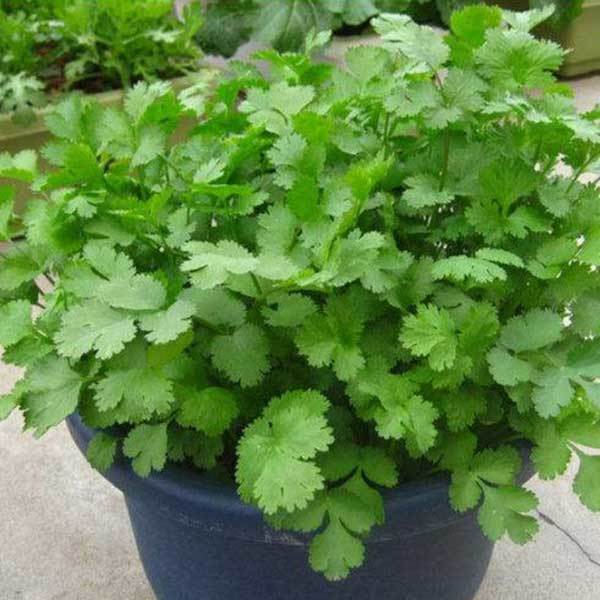Cilantro Leaves Turning Brown: Reasons and Fixes
Introduction
Cilantro is also known as a coriander, which is a popular herb. There are some factors that can cause cilantro brown leaves. We will delve into the reasons for cilantro leaves turning brown and provide solutions.
Why Is My Cilantro Turning Brown?
Environmental Factors
Sunlight Exposure and Intensity: Cilantro plants need a moderate amount of sunlight to thrive. But too much direct sunlight can cause the leaves to turn brown and dry out.
Temperature Fluctuations: Cilantro plants are cool-season crops. The ideal temperature is 60-70°F. Extreme fluctuations in temperature can stress the plant. This is especially common during hot summer months. This causes its leaves to turn brown.
Humidity Levels: High humidity levels can create a favorable environment for fungal diseases. These can cause browning of cilantro leaves.
Watering Practices
Overwatering: Cilantro thrives in well-draining soil that is moist but not soggy. If you overwater your cilantro plant, the roots can become waterlogged and start to rot. This can lead to brown leaves and even death of the plant.
Underwatering: On the other hand, if you underwater your cilantro plant, it will become stressed and start to produce brown leaves. This is a defense mechanism as the plant tries to conserve energy by shedding some of its foliage.
Soil Conditions
Soil Composition and Quality: Cilantro thrives in fertile soil rich in organic matter. Some factors can lead to cilantro leaves turning brown. For example, lack of essential nutrients, poor drainage, or inadequate levels of nitrogen, phosphorus and potassium.
pH Levels: The soil pH level plays a crucial role in nutrient absorption by cilantro plants. Ideally, cilantro grows best in slightly acidic soil with a pH 6.2-6.8. Too acidic or alkaline soil can affect nutrients absorbed. This can lead to cilantro plant leaves turning brown.
Pests and Diseases
Common Pests Affecting Cilantro: Aphids, spider mites and whiteflies are common pests. These pests feed on the leaves. They can cause cilantro to turn brown or even die. So regularly inspect your cilantro plants for any signs of infestation. Take appropriate measures to control the pests.
Fungal and Bacterial Infections: They can also lead to cilantro plant turning brown. Various factors can cause these infections. For example, overwatering, poor air circulation, or contaminated soil.

How to Revive Brown Cilantro Leaves?
Adjusting Environmental Conditions
Choosing the Right Location: Cilantro thrives in partial shade. So make sure it is not receiving direct sunlight for extended periods. If you are growing cilantro indoors, ensure the location has enough natural light without being too hot or cold.
Implementing Shading Techniques: If your cilantro is already exposed to harsh sunlight, you can implement shading techniques for added protection. For example, using a sheer cloth or placing it near tall plants. This will shield it from direct sunlight and create a more humid environment.
Improving Watering Habits
You should water consistently and not over or under-watering. Water your cilantro once a week. Keep the soil moist but not soggy. Regularly check the moisture levels of the soil.
You can purchase a moisture meter at most gardening stores. Insert the probe into the soil near the base of the cilantro plant and check the reading. If it reads dry, then it’s time to water your plant.
Soil amendments
Testing and Adjusting pH Levels: You should test the soil pH level first. Too high or too low pH level can affect the plant to absorb nutrients. This can lead to your cilantro leaves turning brown.
You can easily test your soil's pH level using a home testing kit. You can also take a sample to your local garden center for analysis. You can add either lime or sulfur to adjust the pH level.
Choosing the Right Type of Fertilizer: Select a fertilizer that is specifically formulated for herbs. It should have balanced levels of nitrogen, phosphorus and potassium. Too much nitrogen can lead to cilantro leaves turning brown. While too little can cause stunted growth and yellowing.
Organic fertilizers like compost or manure are also excellent options. They provide a slow release of nutrients and improve soil health. Be sure not to over-fertilize. This can also harm your cilantro plants.
Manage Pest and Disease
Pests Control: You can control common pests by using organic insecticides or neem oil. Regularly inspecting the plant for signs of infestation. Taking immediate action can prevent further damage to the leaves.
Disease Treatment: Fungal and bacterial diseases can also cause cilantro leaves to turn brown. To treat these, remove any affected leaves and ensure good air circulation around the plant. Applying organic fungicides or using a baking soda spray can also help in controlling the spread of disease.
Conclusion
Prevention is always better than cure. So try to maintain optimal conditions to prevent cilantro turning brown in the future. You can revive your brown cilantro leaves and continue enjoying its fresh taste in your cooking with these simple steps.

